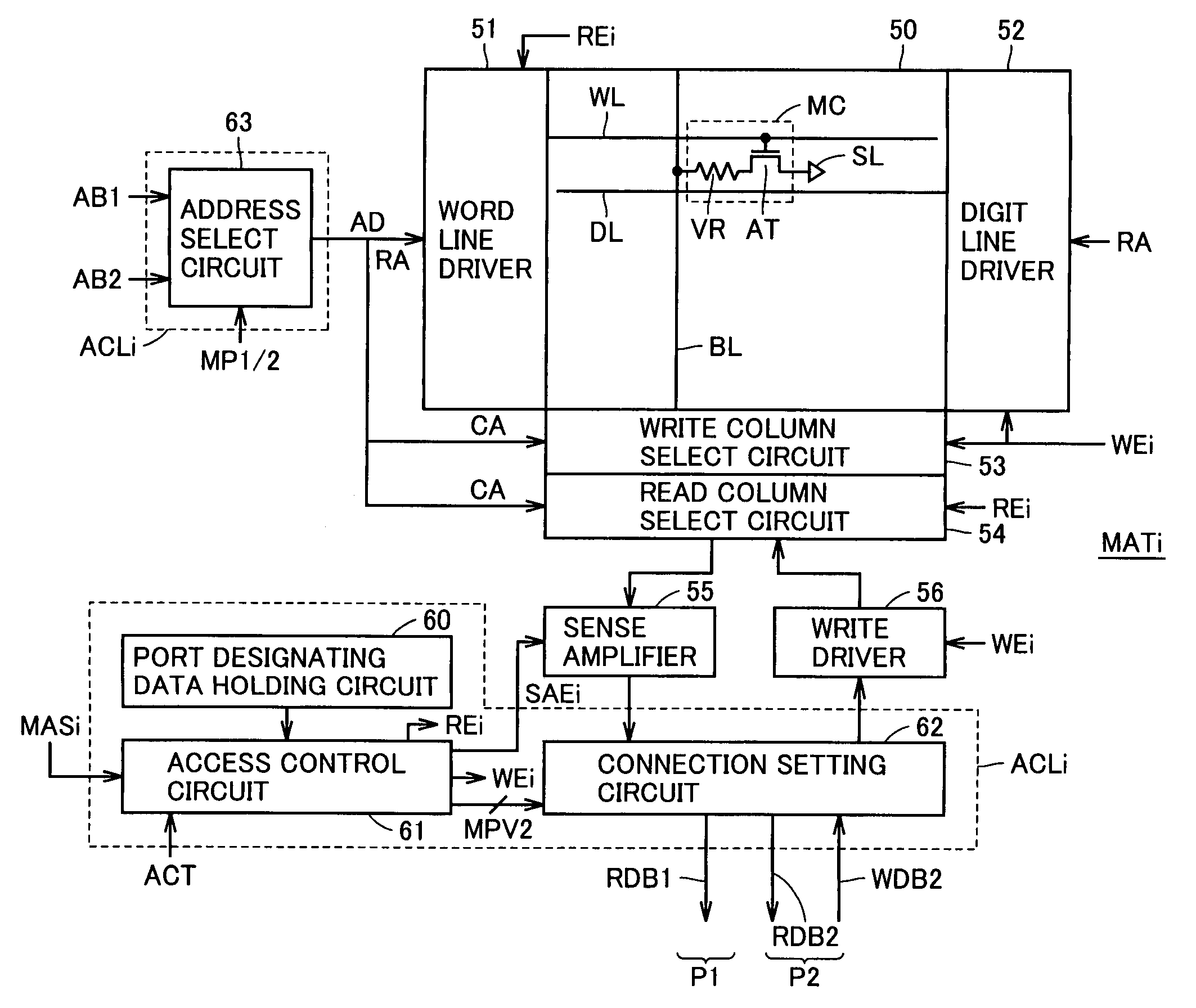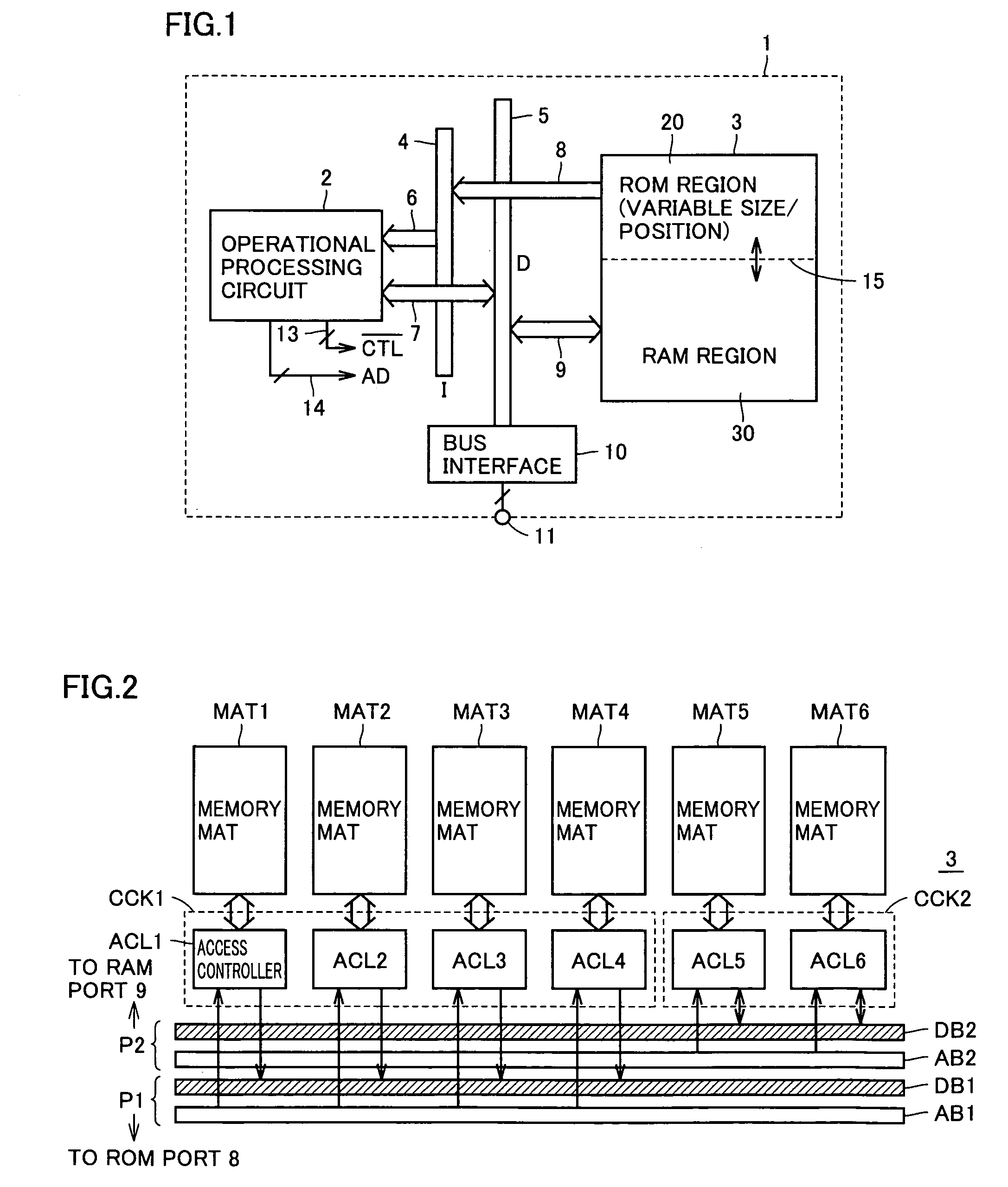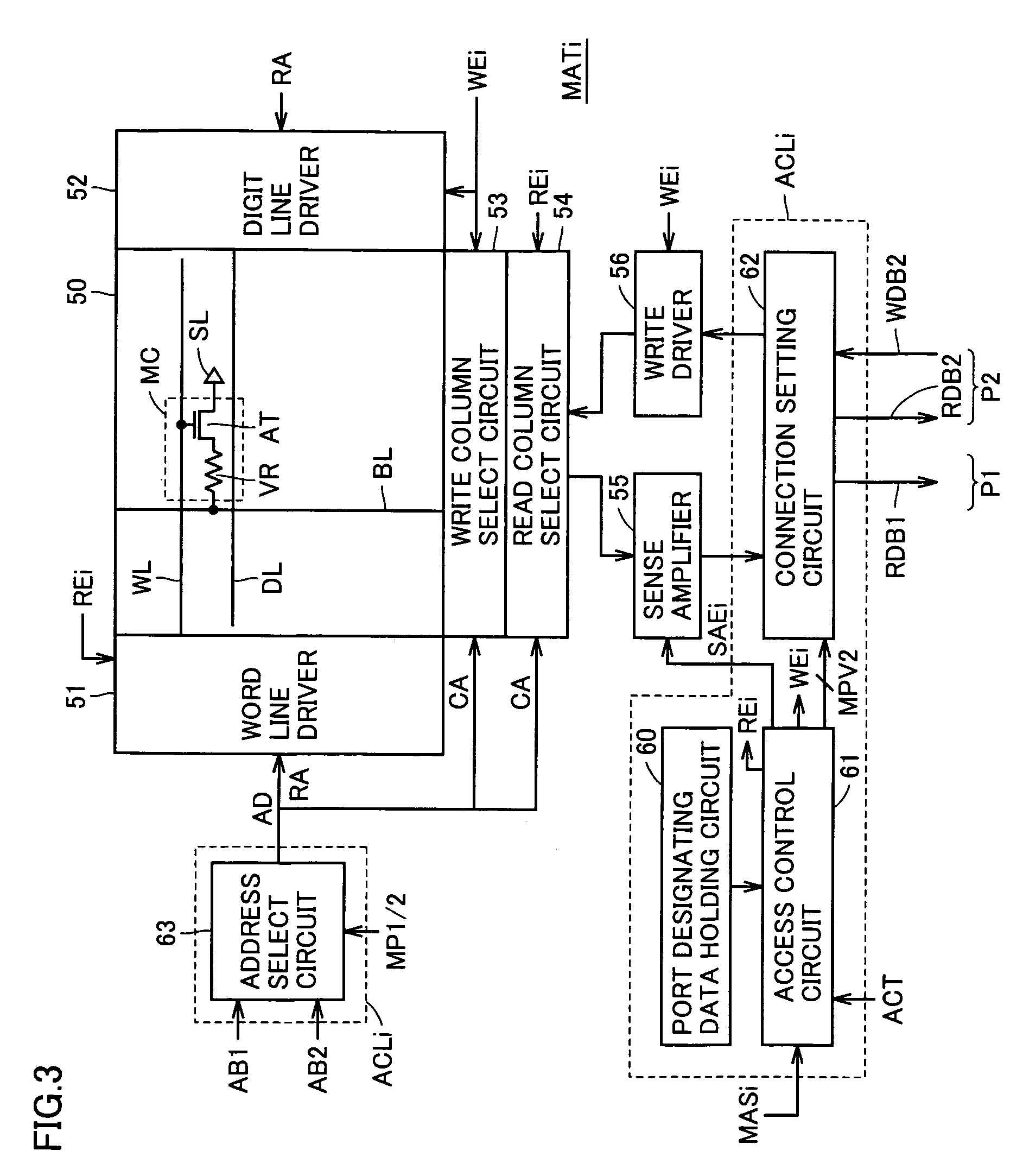Semiconductor memory device, operational processing device and storage system
a memory device and memory technology, applied in the direction of information storage, static storage, digital storage, etc., can solve the problems of increasing the cost of design, development, production and distribution, long data holding time, short writing time, etc., and achieve the effect of fast and efficient operational processing
- Summary
- Abstract
- Description
- Claims
- Application Information
AI Technical Summary
Benefits of technology
Problems solved by technology
Method used
Image
Examples
first embodiment
[0086]FIG. 1 schematically shows a whole construction of an operational processing system according to a first embodiment of the invention.
[0087]In FIG. 1, an operational processing system 1 according to the first embodiment of the invention includes an operational processing circuit 2 for executing operational processing / control processing according to received programs, and a semiconductor memory device 3 for storing program instructions and processing data for operational processing circuit 2.
[0088]Semiconductor memory device 3 is formed of a nonvolatile RAM such as an MRAM, and includes an ROM region 20 having storage information inhibited from being rewritten, and an RAM region 30 having stored information permitted to be rewritten. A boundary region (boundary address) 15 between ROM and RAM regions 20 and 30 is variable. The size and the position in the address space of ROM region 20 can be changed in the address space of nonvolatile RAM 3, and the physical position and storag...
third embodiment
[0220]FIG. 18 schematically shows a whole construction of a nonvolatile RAM according to a third embodiment of the invention. In FIG. 18, the nonvolatile RAM includes M memory array blocks MAP1-MAPM. These memory array blocks MAP1-MAPM may be memory sub-blocks formed by dividing one memory cell array, respectively, or may be memory cell mats arranged individually and separately from each other on a common semiconductor chip. The memory cell mat is a memory circuit unit including an input structure, a column decoder and peripheral circuitry. In FIG. 18, memory array blocks MAP1-MAPM are arranged in one memory array, and is configured to share a digit line DL.
[0221]Each of memory array blocks MAP1-MAPM is divided into a plurality of I / O blocks. In FIG. 18, memory array block MAP1 includes I / O blocks I / O11-I / O1n, and memory array block MAP2 includes I / O blocks I / O21-I / O2-n.
[0222]Memory array block MAPM includes I / O blocks I / OM1-I / OMn. Each I / O block stores one bit of data / information i...
fourth embodiment
[0240]FIG. 20 schematically shows a construction of access controller ACLi according to a fourth embodiment of the invention. Access controller ACLi is arranged corresponding to each memory mat for setting the ROM and RAM regions. In the fourth embodiment, an operational processing circuit provided externally or on the same chip accesses each memory mat via ports P1 and P2, and whether these ports P1 and P2 are each used as the ROM port or the RAM port is set by port attribute setting signals ROM / RAM#1 and ROM / RAM#2. Port attribute setting signals ROM / RAM#1 and ROM RAM#2 set the corresponding ports as the RAM port when at H level. Therefore, in the fourth embodiment, one port is not fixed as the ROM port or as the RAM port, but can be flexibly and appropriately set as the ROM port or the RAM port according to the progress of processing or the contents of processing.
[0241]In FIG. 20, access controller ACLi includes an AND circuit 120a receiving an access instructing signal EN#1 (corr...
PUM
 Login to View More
Login to View More Abstract
Description
Claims
Application Information
 Login to View More
Login to View More - R&D
- Intellectual Property
- Life Sciences
- Materials
- Tech Scout
- Unparalleled Data Quality
- Higher Quality Content
- 60% Fewer Hallucinations
Browse by: Latest US Patents, China's latest patents, Technical Efficacy Thesaurus, Application Domain, Technology Topic, Popular Technical Reports.
© 2025 PatSnap. All rights reserved.Legal|Privacy policy|Modern Slavery Act Transparency Statement|Sitemap|About US| Contact US: help@patsnap.com



